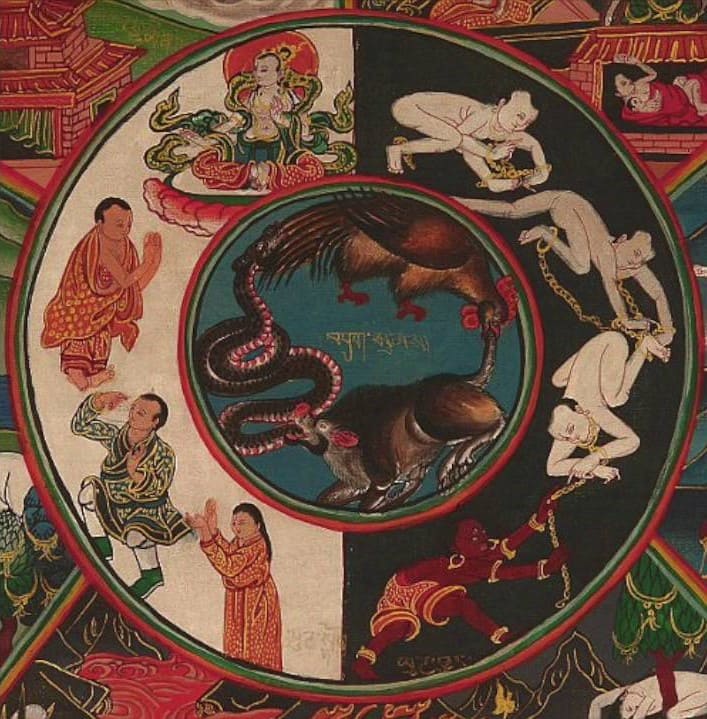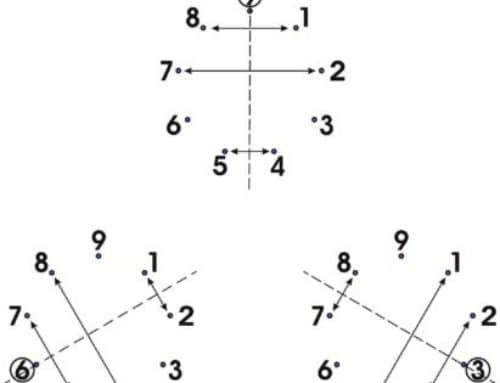The Instinctual Drives are pathways by which life force moves through us to express deep somatic wisdom. When these motivational drives are attending to a real instinctual need — whether for physical well-being, sexual contact, or belonging — we feel more alive, more vital. We can be passionate about anything related to instinct.
A common misunderstanding or bias about the Instinctual Drives occurs when we associate excitement, energy, passion, intensity, “aliveness,”and focus almost exclusively with the Sexual Drive, ignoring how these qualities play out in the Social and Self-Preservation Drives.
Let’s re-examine some of the basic assumptions around how instinctual energy works and what purpose it serves.
The Biological Basis of Instinct
One of the principal distinctions of New York Enneagram teaching is that that the Instinctual Drives are biological drives that we share with other mammals. They are not simply clusters of concepts or descriptions, but motivational drives to meet specific biological and emotional needs that regulate our physical organism.
Each of the three Instinctual Drive motivates us to pursue different kinds of Instinctual Resources. Some of these are easily-recognizable resources like food, shelter, money, and possessions, while others are more abstract or less easily-quantified and interpersonal, such as attraction, enticement, interest, attention, goodwill, a feeling of belonging, respect, and more.
You’re probably familiar with the word “libido” as a commonly-used synonym for “sexual drive.” In psychoanalytic theory, this word is used in a broader sense, to describe anything that seems to provide regulation of perceived instinctual needs. Any resource for our instinctual needs can be the object of libidinal energy and focus, and we experience a sense of aliveness, charge, intensity, focus, and excitation when we are in pursuit of these needs, regardless of whether they fall into the Self-Preservation, Sexual, or Social domains.
Our nervous system becomes physiologically aroused around the possibility of each of these resources, so that we have the energy needed to motivate us to fulfill our needs. Anything that can (or seems to) constitute an Instinctual Resource can be an object of instinctual excitation, passion, focus, aliveness, and intensity.
Therefore, what distinguishes one Instinctual Drive from another is not the level or presence of passion but:
- the specific Instinctual Needs that create the instinctual motivation
- the particular object(s) of excitation
- the quality, direction, and concentration of physiological and psychological excitation that is directed toward specific resources
Self-Preservation Drive : Passionate About Physical Capacity
The Self-Preservation Drive directs the physiological arousal that motivates us to ensure:
- Physical Well-being
- Physical Sustainability (resilience, dynamic homeostatic balance inwardly and outwardly)
- Resources and Foundations for our physical needs
When we are feeling the healthy motivation of Self-Preservation, we are directing our attention within our own boundaries and to objects in the environment so that we can generate a sense of physical capacity. Athletics and activities like hiking or mountain climbing — things that allow us to feel our physical capacity and power directly — can all be the focus of Self-Preservation passion, focus, and excitement, as well as typically-associated Self-Preservation resources like lifestyle, home, food, environment and certain possessions. I speculate that most professional athletes and those who are “daredevil” types are often strongest in Self-Preservation, taking this particular drive for excitement to a kind of maximum external expression of capacity. Conversely, this drive can also show up as a compulsion to be excessively risk-avoidant, with a focus on maintaining a strong degree of safety to ensure excess capacity and prevent resource depletion.
The Self-Preservation drive is the drive to ensure that resources are there when hunger arises, rather than the specific appetite of hunger. It ensures that we’re not merely comfortable, but have the physical capacity to thrive. When fear overtakes the personality, this drive can cling to comfort or safety at the expense of really living, mistaking the activation of personality structures for true aliveness.
The Self-Preservation Drive tends to focus on practical and useful skills and talents. Many people strong in Self-Preservation have well-developed skills and passions for a craft or useful application that leads to tangible benefits, ranging from being an excellent car mechanic to a healer or a business strategist.
Because Self-Preservation energy and excitement is focused on individual well-being, it often has a more self-contained quality than the other two instincts, Nonetheless, the internal drive of Self-Preservation is felt just as intensely, even though it appears more understated than Sexual or Social.
Sexual Drive : Passionate About Chemistry and Attraction
The Sexual Drive directs the physiological arousal that motivates us to ensure:
- Sexual Contact
- Chemistry with complementary energies
- “Loss of Self” — the physical and psychological regulation through the charge and discharge of the nervous system and surrender of psychological boundaries
When we are feeling the healthy motivation of the Sexual Drive, we are sensitive to what evokes attraction and energetic arousal in ourselves and others, so that we can elicit and surrender to attraction and desire. This directed focus creates a “tunneling” effect with people to whom we are sexual attracted or have intense chemistry with. Rather than aiming to establish the steady connection that is the domain of the Social Drive, the Sexual Instinct creates a “push/pull” dynamic that stimulates and intensifies sexual attraction and intrigue, and challenges and dissolves psychological boundaries. Thus, it can have a “vampiric” quality when unbalanced — volatile, destabilizing, and transgressing boundaries without permission.
Although the focus of instinctual excitement for the Sexual Drive is generally other people, a common mislabeling of this drive as the instinct of “intimacy” or “one-on-one” is misleading and incorrect. Most human beings generally prefer one-on-one relationships and connections, regardless of their dominant instinctual drive. What underlies or provides the motivation for those relationships varies a great deal, as does how much energy is devoted to pursuing and cultivating those relationships for Social or Sexual purposes. Healthy “one- on-one” relating requires all three instinctual drives and can have different motivations, but it is largely the domain of the Social Drive.
The Sexual Instinct is not the appetite of sexual desire, but the drive to ensure there is attraction and interest in case the sexual appetite arises. Therefore, the focus of Sexual energy can also be on things that, unconsciously, would add to one’s “sexual display” — the qualities and characteristics used to cultivate a personal flavor that hook the interest and attention of potential mates. This can extend to situations that offer the possibility of going beyond one’s habitual boundaries (in the interest of renewing one’s quality of being interesting) or that seem to shore up a “display” that showcases one’s virtuosity and talents. This drive, in both animals and humans, compels the development of qualities of perceived beauty and intrigue that may have little practical function or utility beyond ensuring that if the object of desire appears, he or she will find me utterly irresistible.
Social Drive: Passionate About Connection
The Social Drive directs the physiological arousal that motivates us to ensure:
- Relatedness
- Belonging
- An understanding of and participation within one’s Context, a “larger world” than oneself
The needs of a healthy Social Drive are met through interactions with other people. This doesn’t mean that someone with a strong social drive always wants to be around other people, but that much of their attention will be oriented to using their talents and interests to create meaning and connection through relationship. Unlike the tunneling focus of the Sexual Drive, the lens of the Social Drive is very flexible and adaptable, and the experience of this energy can vary greatly in concentration. Energy and excitement can move toward intimate conversations, like the energy used to initiate and maintain a close friendship, or can extend to groups, causes, and societies, like the energy necessary for great social change and movements. Think of the exuberance and passion you feel at seeing a beloved friend who you haven’t seen in a while – that’s not Sexual energy, that’s Social.
The Social Drive compels us to want to share ourselves and get to know other people for who they are, and one of the energetic currencies of this drive is signaling. Social signaling is how we convey a first impression and how we continue to visibly share and transmit our values and our identification with specific groups or cultures. This is done through everything from our clothing to our haircut to the way that we speak.
Just as the Self-Preservation and Sexual Instincts are drives to ensure certain “appetites” are tended to, in Social, we experience this form of longing as loneliness and yearning for closeness, intimacy, and contact with others. It gives us the motivation to cultivate those connections as well as qualities and interests that can be grounds for establishing relationships and affiliations.
The Social Drive is drawn to convening and adapting to situations that allow people to foster and renew connections, and to experience how they fit into a particular web of human relatedness. When this drive is unbalanced, signaling can be used to establish dominance and control rather than to encourage relatedness and respect. People with a strong Social Drive may feel internal pressure to keep their lens wide open at all times, rather than having discernment over where and when to spend their energetic resources.
To have a clearer sense of the distinct qualities of energy, physical sensation, and excitation of all three Instinctual Drives, check out our videos and webinars to learn more about the Instinctual Approaches and how to integrate them.





